Our verdict
- Top pick in best treadmill running shoes (2024)
Pros
- Fun and energetic
- Velvety smooth strides
- Runs and feels light
- Comfy for easy days
- Cushioned for long runs
- Absorbs impact
- Awesome fit
- Welcomes wide feet
- Reflective
- Worth the money
Cons
- Really lacks outsole durability
- Underperforms in cold weather
Audience verdict
- Top 21% in road running shoes
- Top 8% in Hoka running shoes
- Top 21% most popular running shoes
Comparison
The most similar running shoes compared
+ + Add a shoe | |||||
|---|---|---|---|---|---|
| Audience score | 90 Superb! | 85 Good! | 92 Superb! | 87 Great! | |
| Price | £140 | £140 | £130 | £140 | |
| Pace | Daily runningTempo | Daily running | Daily running | Daily running | |
| Arch support | Neutral | Neutral | Neutral | Neutral | |
| Weight lab Weight brand | 7.9 oz / 225g 8.2 oz / 232g | 10.5 oz / 298g 11.1 oz / 314g | 10.1 oz / 285g 9.7 oz / 275g | 8.2 oz / 232g 8.3 oz / 235g | |
| Lightweight | ✓ | ✗ | ✗ | ✓ | |
| Drop lab Drop brand | 5.7 mm 5.0 mm | 5.2 mm 5.0 mm | 6.5 mm 6.0 mm | 9.6 mm 5.0 mm | |
| Strike pattern | Mid/forefoot | Mid/forefoot | Mid/forefoot | HeelMid/forefoot | |
| Size | True to size | True to size | True to size | True to size | |
| Midsole softness | Soft | Balanced | Soft | Balanced | |
| Difference in midsole softness in cold | Big | Normal | Normal | Big | |
| Toebox durability | - | Decent | Decent | Decent | |
| Heel padding durability | - | Good | Bad | Bad | |
| Outsole durability | - | Good | Good | Good | |
| Breathability | Moderate | Moderate | Moderate | Breathable | |
| Width / fit | Narrow | Narrow | Narrow | Medium | |
| Toebox width | - | Narrow | Medium | Narrow | |
| Stiffness | Flexible | Stiff | Moderate | Moderate | |
| Torsional rigidity | Flexible | Moderate | Stiff | Stiff | |
| Heel counter stiffness | Moderate | Stiff | Moderate | Stiff | |
| Rocker | ✓ | ✗ | ✓ | ✓ | |
| Heel lab Heel brand | 30.7 mm 29.0 mm | 33.2 mm 30.0 mm | 34.1 mm 38.0 mm | 36.0 mm 37.0 mm | |
| Forefoot lab Forefoot brand | 25.0 mm 24.0 mm | 28.0 mm 25.0 mm | 27.6 mm 32.0 mm | 26.4 mm 32.0 mm | |
| Widths available | NormalWide | Normal | Normal | NormalWide | |
| Orthotic friendly | ✓ | ✓ | ✓ | ✓ | |
| Season | All seasons | All seasons | All seasons | SummerAll seasons | |
| Removable insole | ✓ | ✓ | ✓ | ✓ | |
| Ranking | #128 Top 20% | #225 Bottom 39% | #7 Top 2% | #154 Top 42% | |
| Popularity | #135 Top 21% | #55 Top 15% | #265 Bottom 28% | #13 Top 4% |
Who should buy
The Hoka Mach 5 is one of the top-pick options if you're looking for:
- a road running shoe that's lively and enjoyable for fast and easy runs
- a lightweight yet cushioned trainer that can go the distance
- an excellent value for money (£20 cheaper than the average price of tempo trainers)
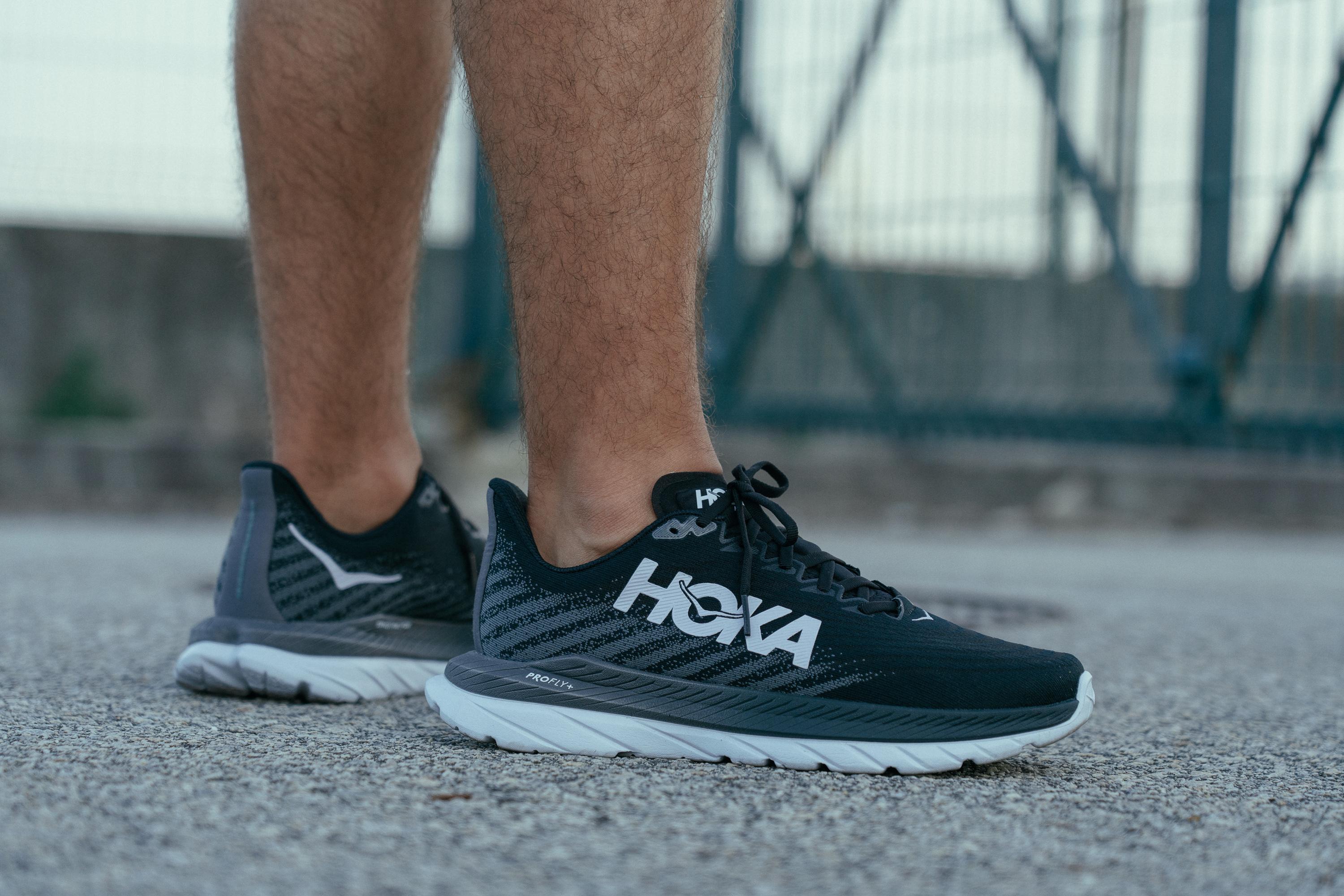
This Hoka shoe is an amazing all-rounder: responsive for fast days, cushioned for long runs, and comfortable enough for easy days and walks.
Who should NOT buy
Although it's a well-loved shoe, the Mach 5 also has its share of flaws. The biggest one is the lack of rubber outsole which leads to both a lack of durability and grip on wet pavement.
We highly recommend tempo trainers like the ASICS Novablast 3 and the Saucony Endorphin Speed 3. Both are similar in performance to the Mach 5 but come with a protective rubber layer at the bottom.
And if you want to stick to Hoka, we encourage you to check out the top-tier Hoka Mach X.
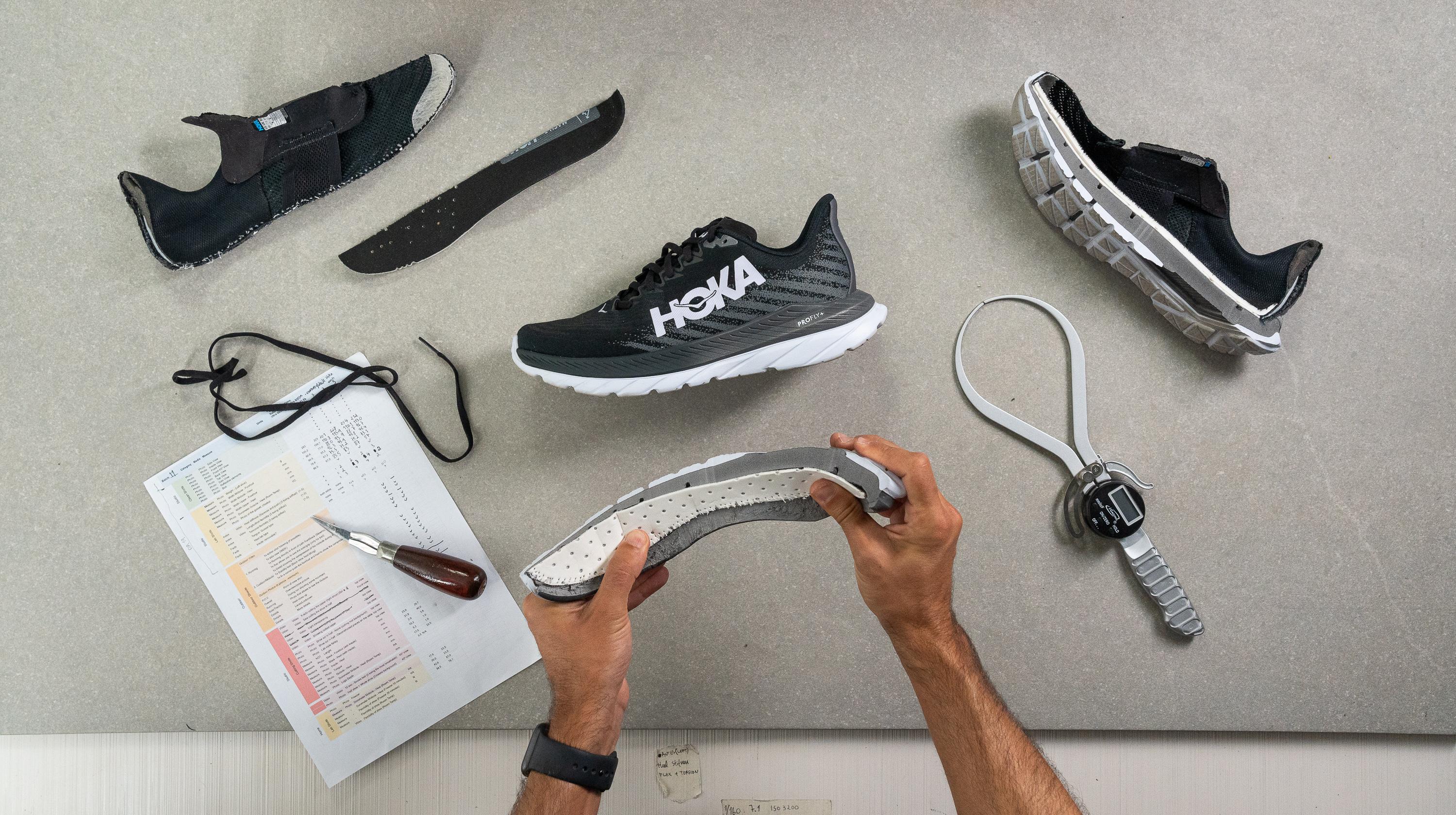
Cushioning
Shock absorption
The Mach 5 delivers top-tier shock absorption in the heel with 139 SA, making it a solid choice for heel strikers who crave plush rear cushioning. In contrast, the forefoot is noticeably thinner, resulting in a more average 107 SA.
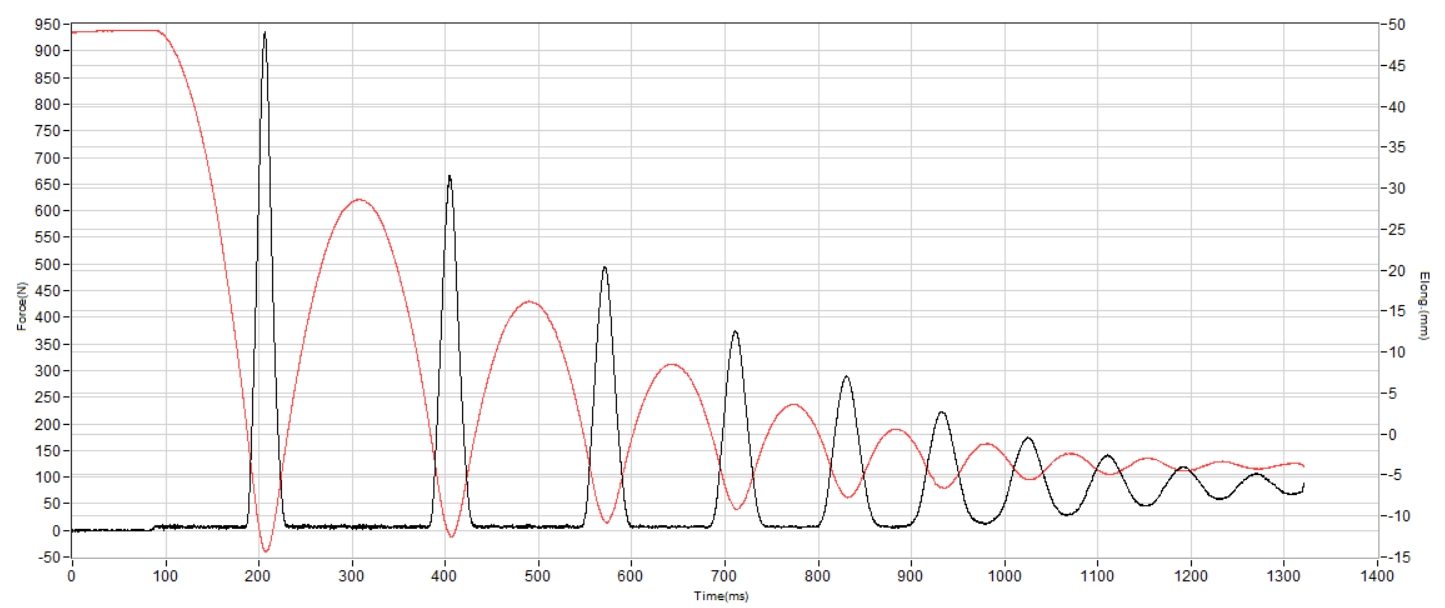
| Hoka Mach 5 | 139 SA |
| Average | 129 SA |
Energy return
One of the main advantages of the Mach series compared to the Clifton is its supercritical midsole, and believe us, it truly makes a difference. While recent Cliftons lagged behind in our energy return test, we found the Mach 5 hit a solid 64.5%, making it a responsive, bouncy daily trainer.
| Hoka Mach 5 | 64.5% |
| Average | 58.6% |
Heel stack
Running in the Mach 5, our feet felt quite pampered and well-protected from impact. Even though it's not a max-cushioned shoe, it certainly delivered enough cushioning to make us forget about hard heel landings.
Using a calliper, we measured heel thickness at 30.7 mm. It's not enough to make it a max-cushioned shoe but is close to the average of running shoes.

| Hoka Mach 5 | 30.7 mm |
| Average | 34.7 mm |
Forefoot stack
Measuring the forefoot stack, our calliper showed 25.0 mm. This is about the same as the average road shoe.
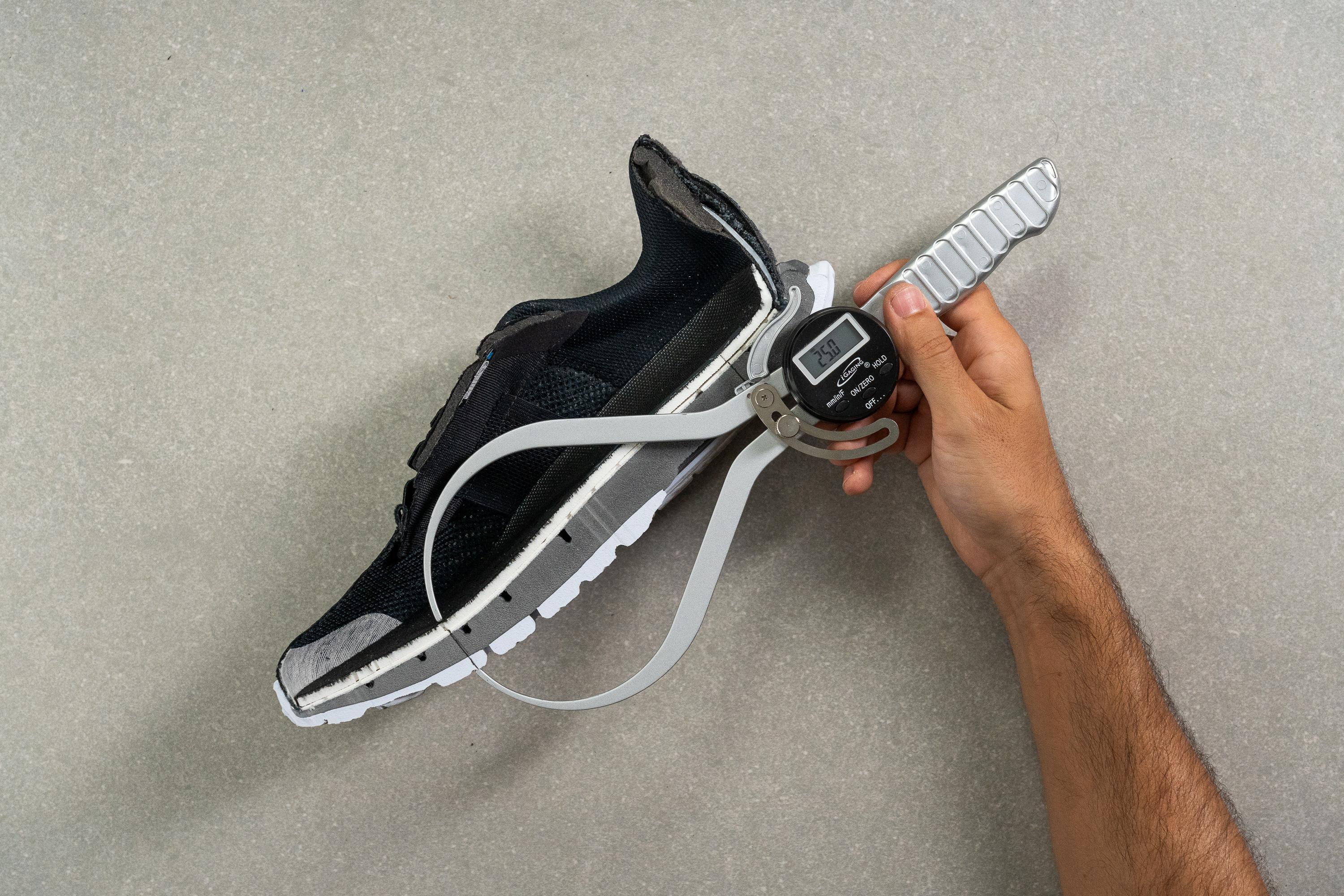
| Hoka Mach 5 | 25.0 mm |
| Average | 26.1 mm |
Drop
Checking the heel-to-toe drop of the shoe, it appears to be close to the brand's official statement (which is 5 mm). Based on our own stack measurements, we found it to be 5.7 mm.
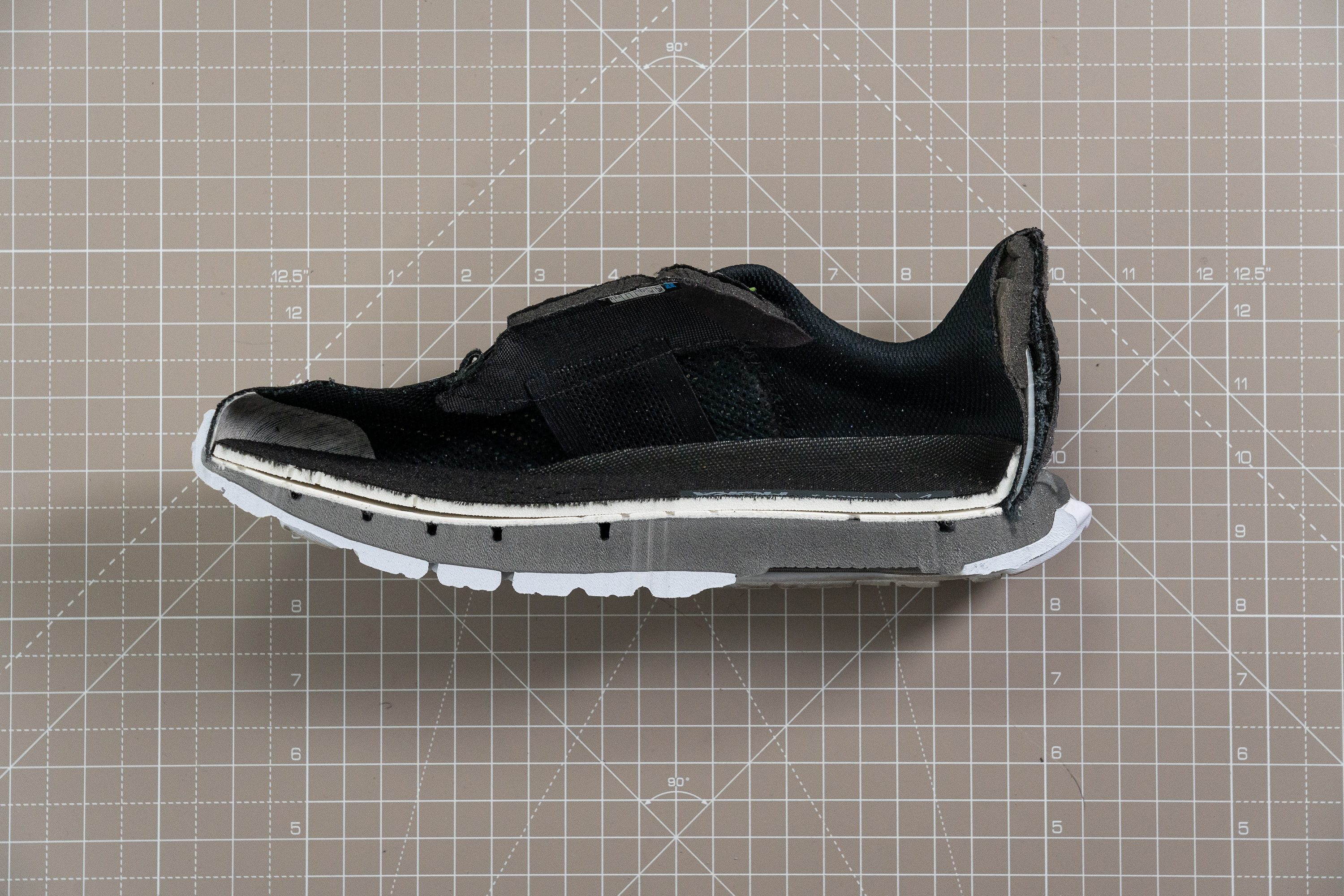
| Hoka Mach 5 | 5.7 mm |
| Average | 8.6 mm |
Midsole softness
We noticed that the Mach 5 is softer than its predecessor, which also made it homier to the foot. But it's not so soft that it compromises stability.
This proves to be true in our durometer measurements. Showing 15.0 HA in the midsole, the shoe got 29% softer compared to the Mach 4, which also puts it among the softest running shoes on the market. The Hoka Mach 5 is 60% plusher than the average!
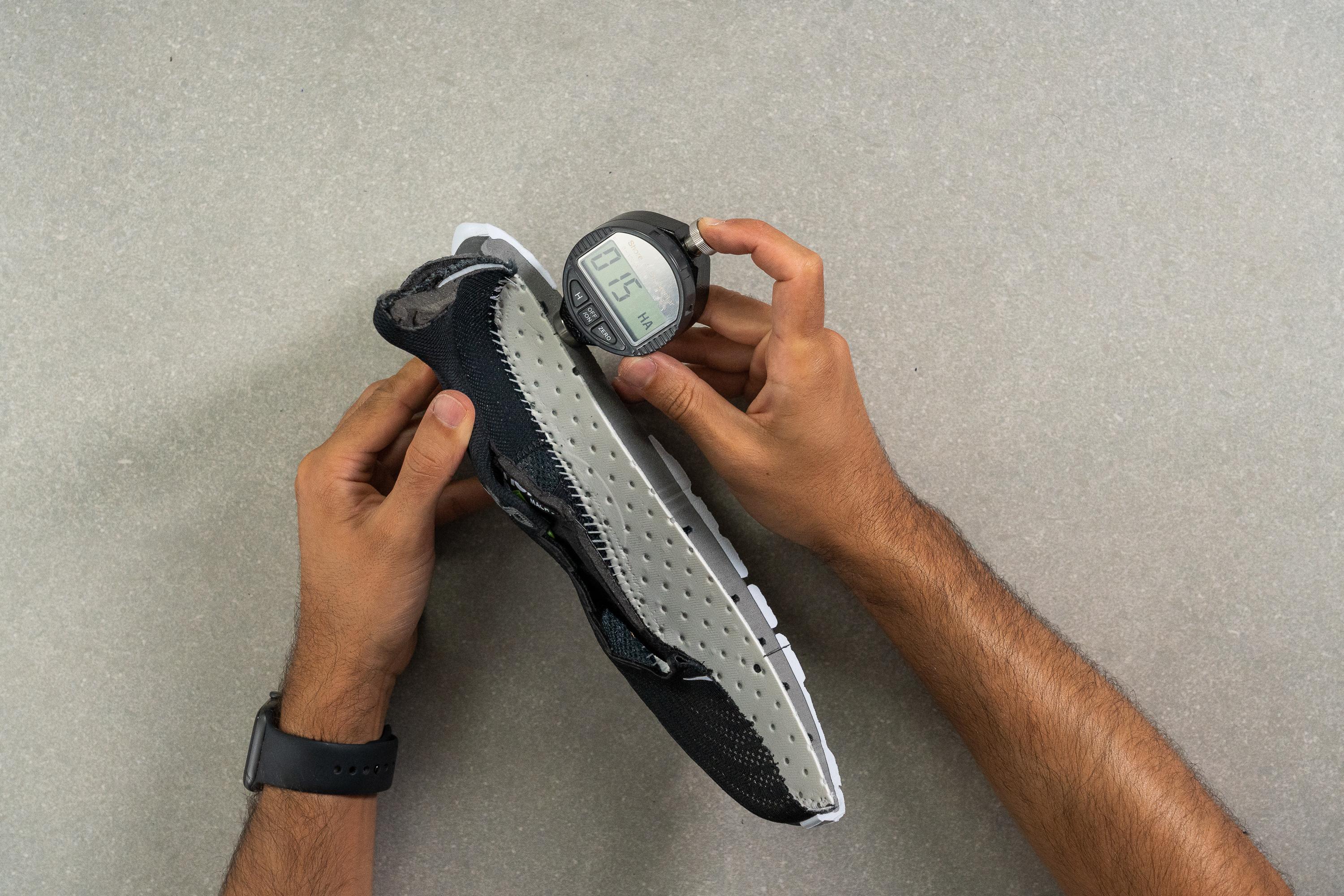
This tempo trainer from Hoka also uses a little trick to make its ride feel extra soft. Instead of having a hard rubber outsole, it features a firm rubberized EVA foam as a secondary cushioning layer. It is more durable than the primary ProFly+ but is not as hard as a typical rubber outsole.

In terms of softness, that made us feel as if we were landing directly on exposed foam.
| Hoka Mach 5 | 15.0 HA |
| Average | 20.4 HA |
Ride
The Mach 5 feels amazingly energetic! It even made us run at a faster pace than we initially intended!
There is a welcome bit of bounce but nothing extra.
The upgraded ProFly+ foam deserves a huge thumbs-up from us!
The shoe's midsole is slightly rockered. It features what the brand calls "meta-rocker geometry" which makes each step feel buttery smooth.
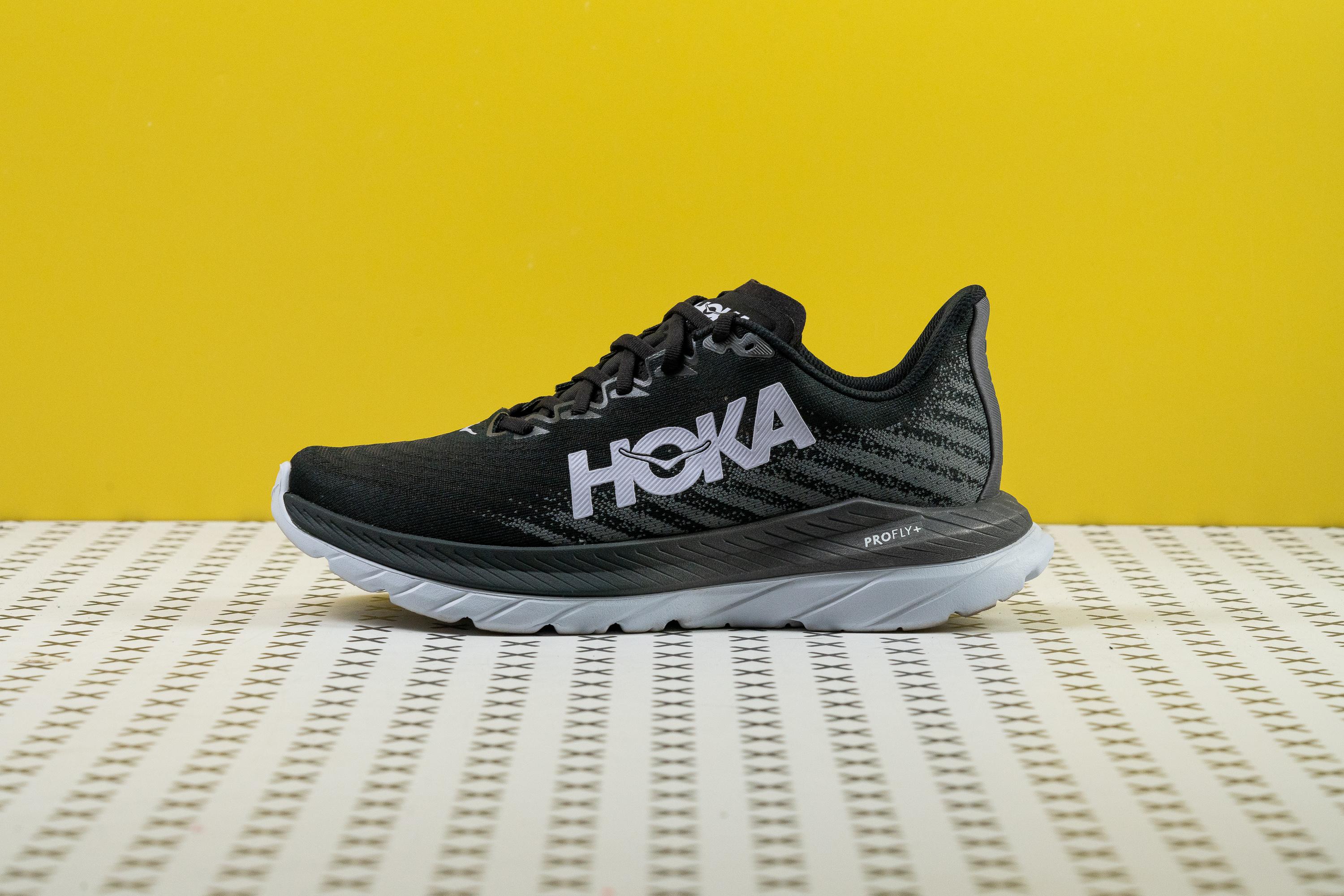
Size and fit
Size
Hoka Mach 5 fits true to size (358 votes).
Toebox width - widest part
The shoe's midfoot kept us securely locked in and the toebox felt roomy enough for our medium-width feet.
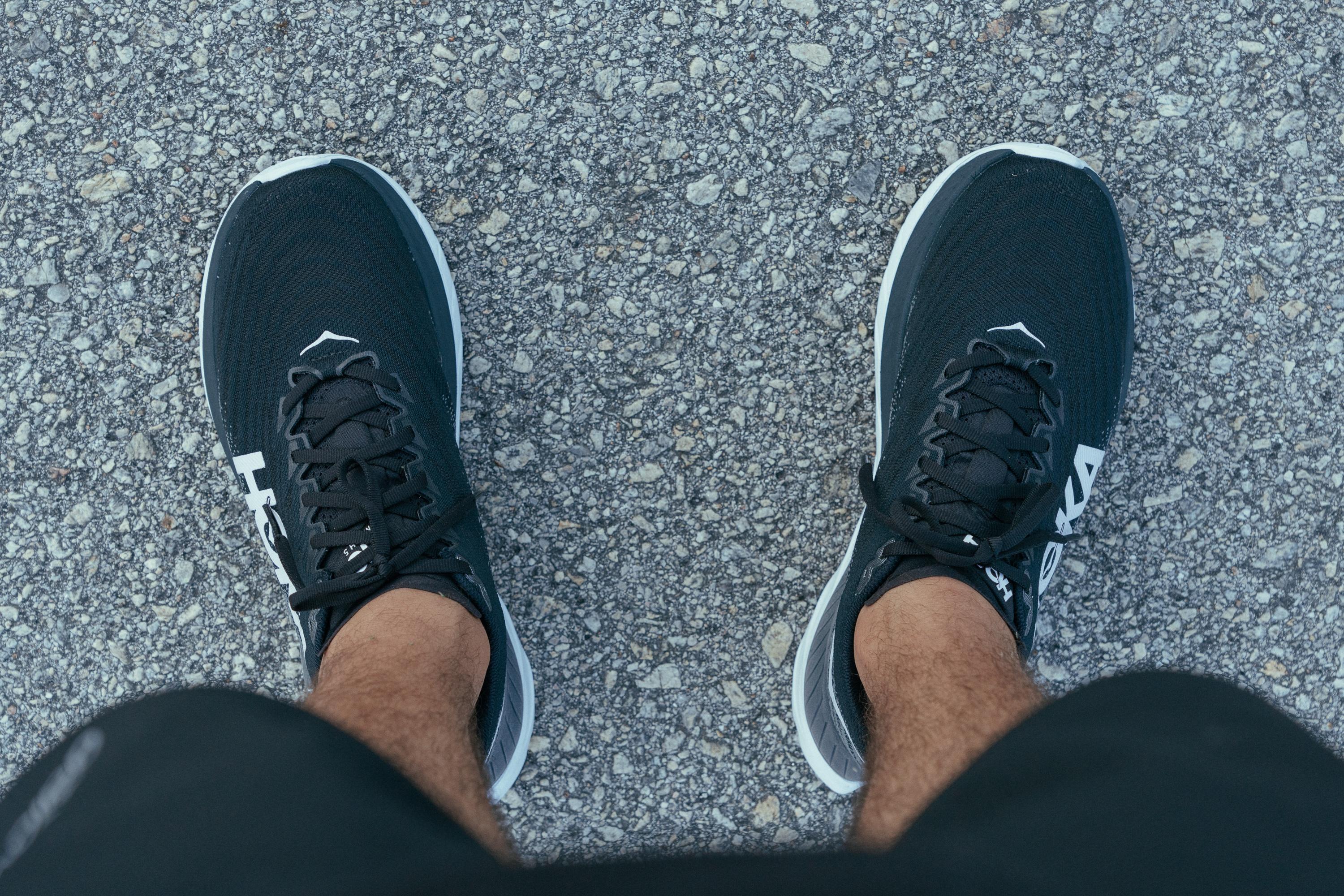
Looking at the numbers, however, the forefoot part of the upper appears to be narrower than the average but still in the medium-width range. At its widest, the toebox is 95.4 mm wide (2.7 mm narrower than average).
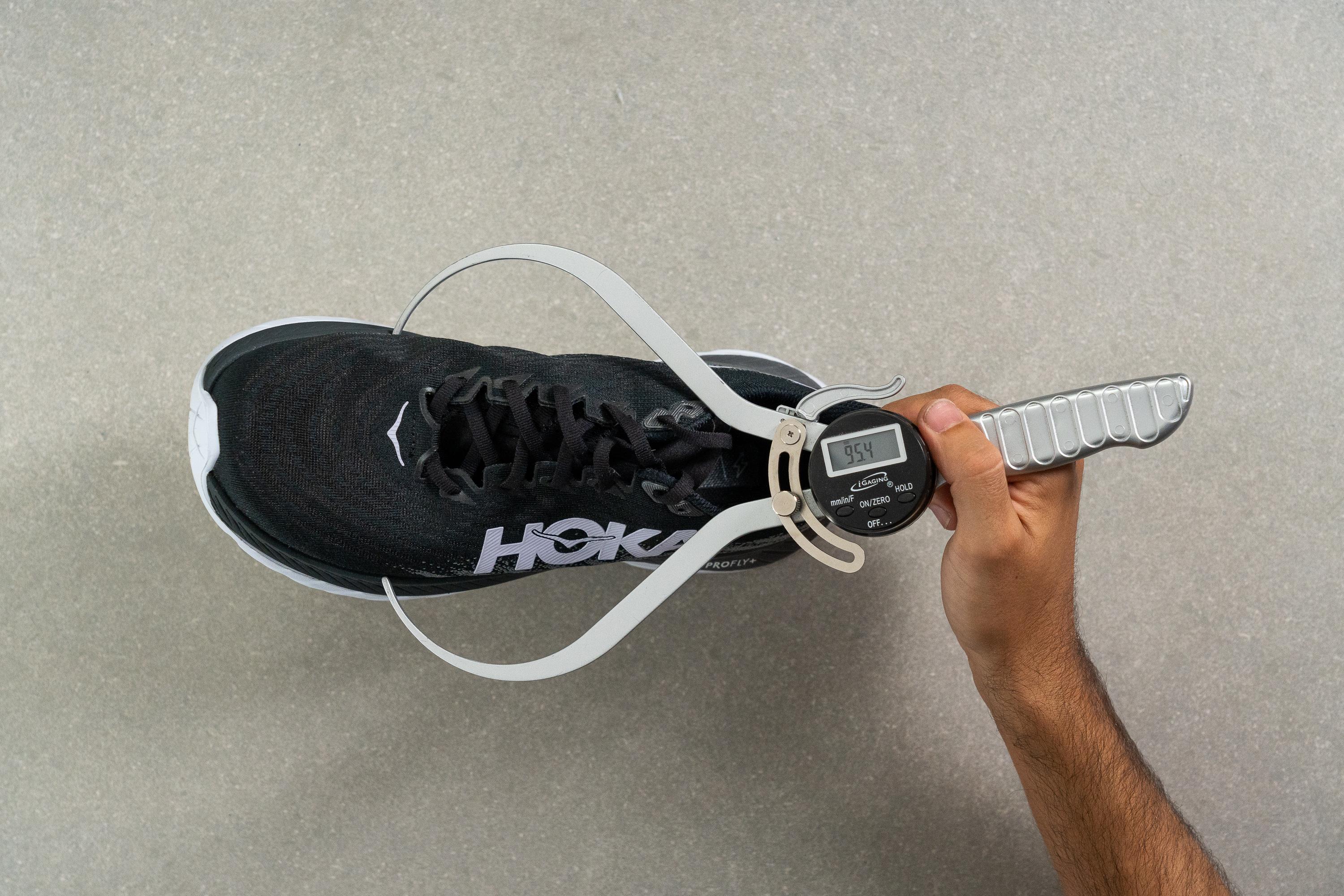
This test follows an older methodology, which is why you don't see recently tested shoes in the chart. Results from different methodologies can not be compared.
| Hoka Mach 5 | 95.4 mm |
| Average | 98.5 mm |
Traction / Grip
From our experience, the Mach 5 has great traction on dry pavement. But come rainy days and its exposed foam gets dangerously slippery.
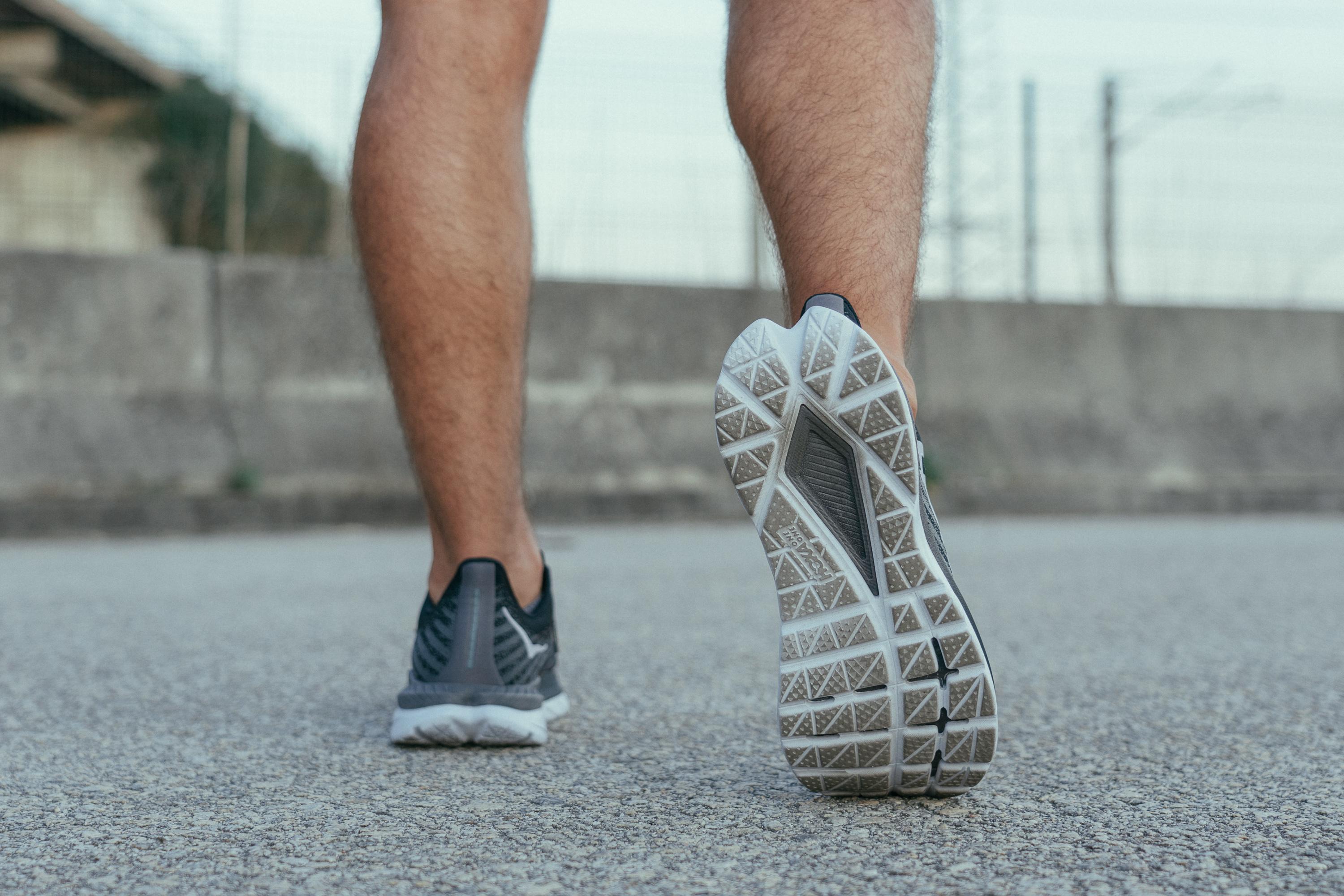
Traction test
We tested the Mach 5 on wet concrete using the strict SATRA TM144 method and recorded a 0.54 score. This result puts the shoe ahead of most Hoka models for wet grip.
On dry pavement, our runs showed the Mach 5 is even more confidence-boosting, offering steady traction for both fast-paced workouts and easy miles. From our field experience, it’s clear this lightweight, road-focused shoe delivers all-around grip.
| Hoka Mach 5 | 0.54 |
| Average | 0.48 |
Outsole design
The Hoka Mach 5 skips a traditional rubber outsole and instead uses a layer of rubberized foam. While this might worry runners used to standard rubber, we found that grip performance is surprisingly good for this kind of setup.
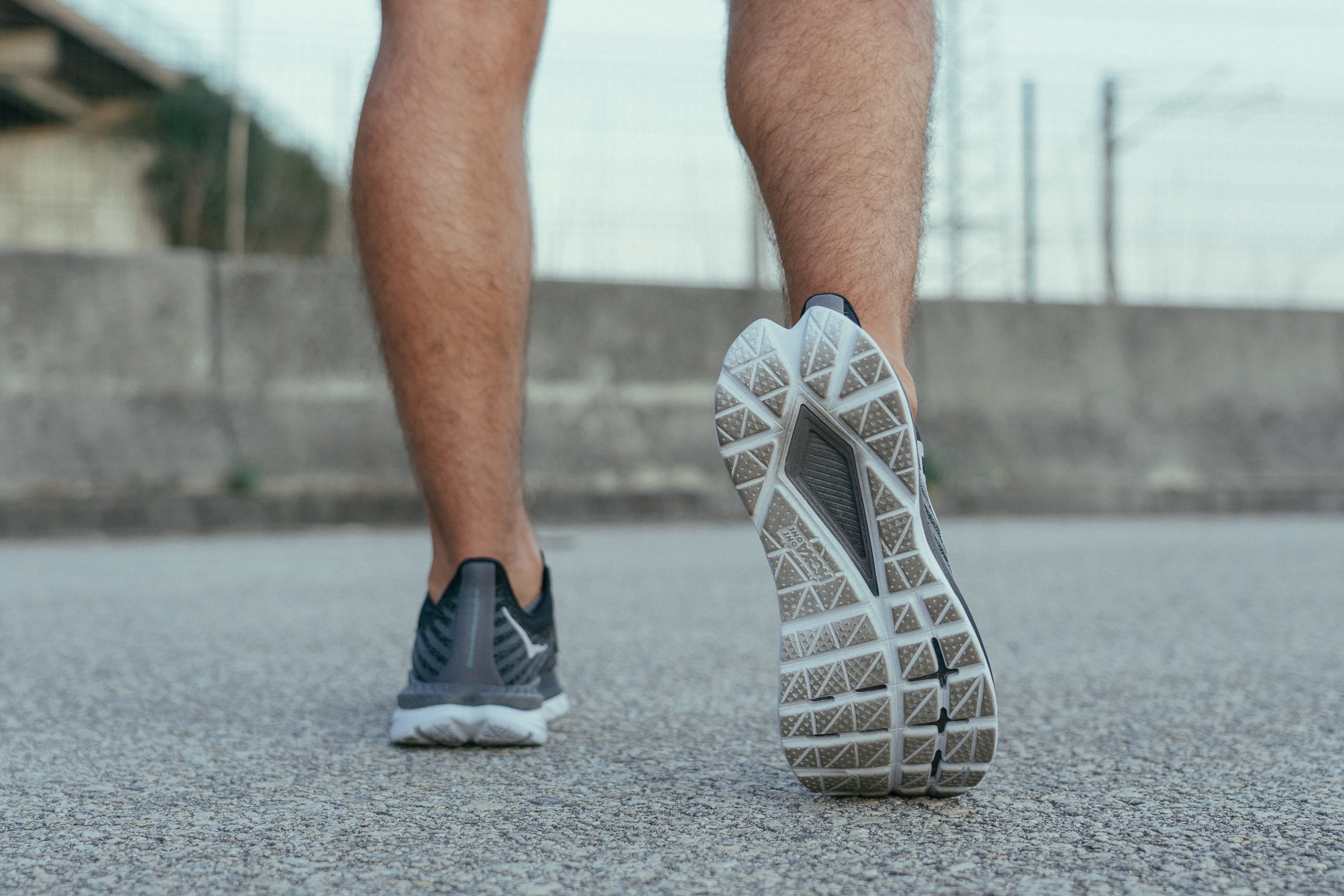
Flexibility / Stiffness
In the era of hyper-cushioned, stiff, and aggressively rockered running shoes, the Hoka Mach 5 felt like a nice break. It has a pretty flexible nature which contributes to the shoe's overall comfort. It bent in all the right places helping our foot feel free and manoeuvrable.
Measuring the forefoot flexibility in the lab, we found that it only takes 9.4N to bend the Hoka Mach 5 to 30 degrees. This makes the shoe way more flexible than the average road shoe!
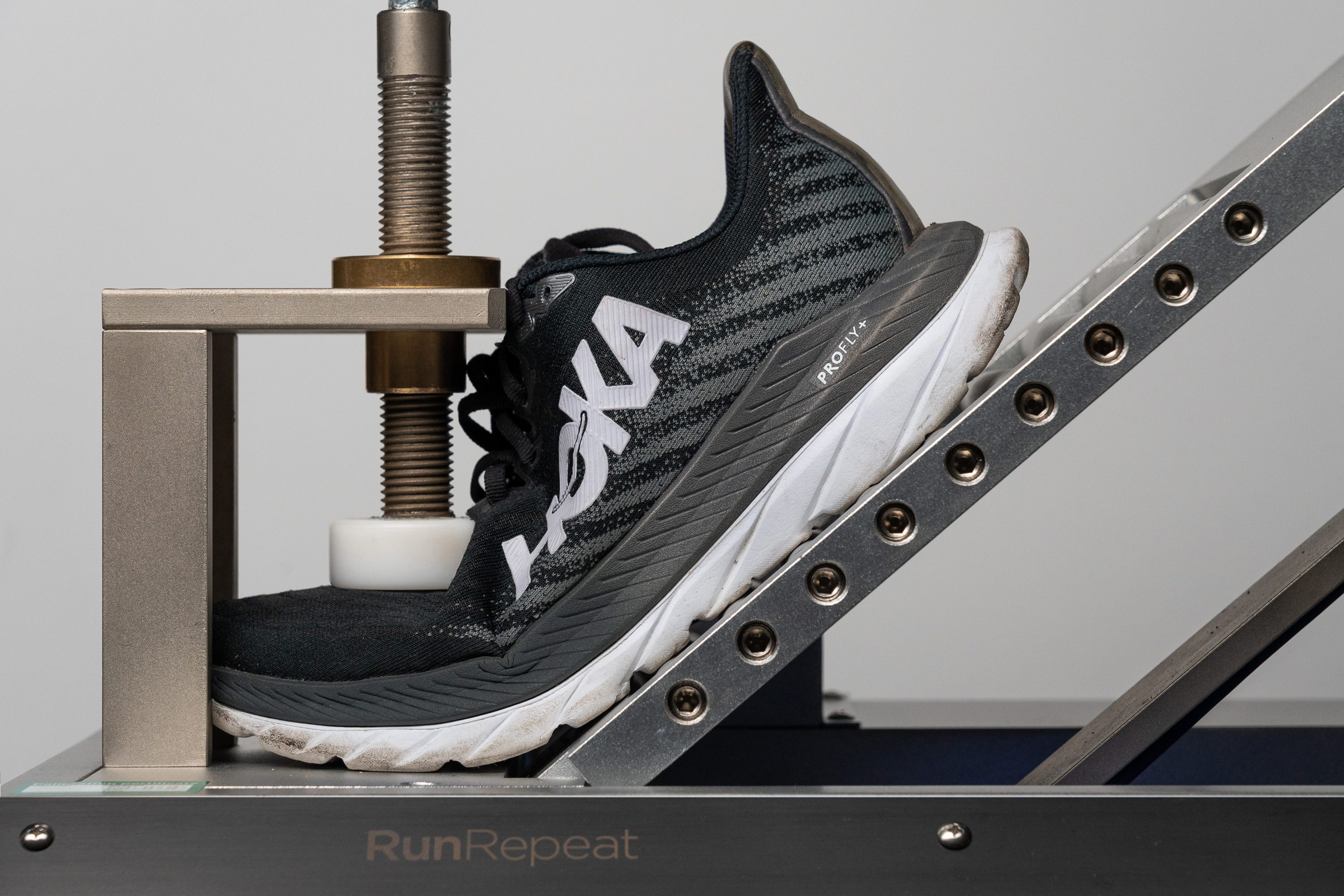
| Hoka Mach 5 | 9.4N |
| Average | 15.2N |
Weight
The fact that the Mach 5 is well-cushioned doesn't seem to affect its lightness. In fact, it is even a little lighter than the average tempo trainer in a men's US size 9.
| Hoka Mach 5 | Average |
| 7.9 oz (225g) | 8.3 oz (236g) |
Lighter weight paired with the shoe's snappy ride is a fabulous combination!
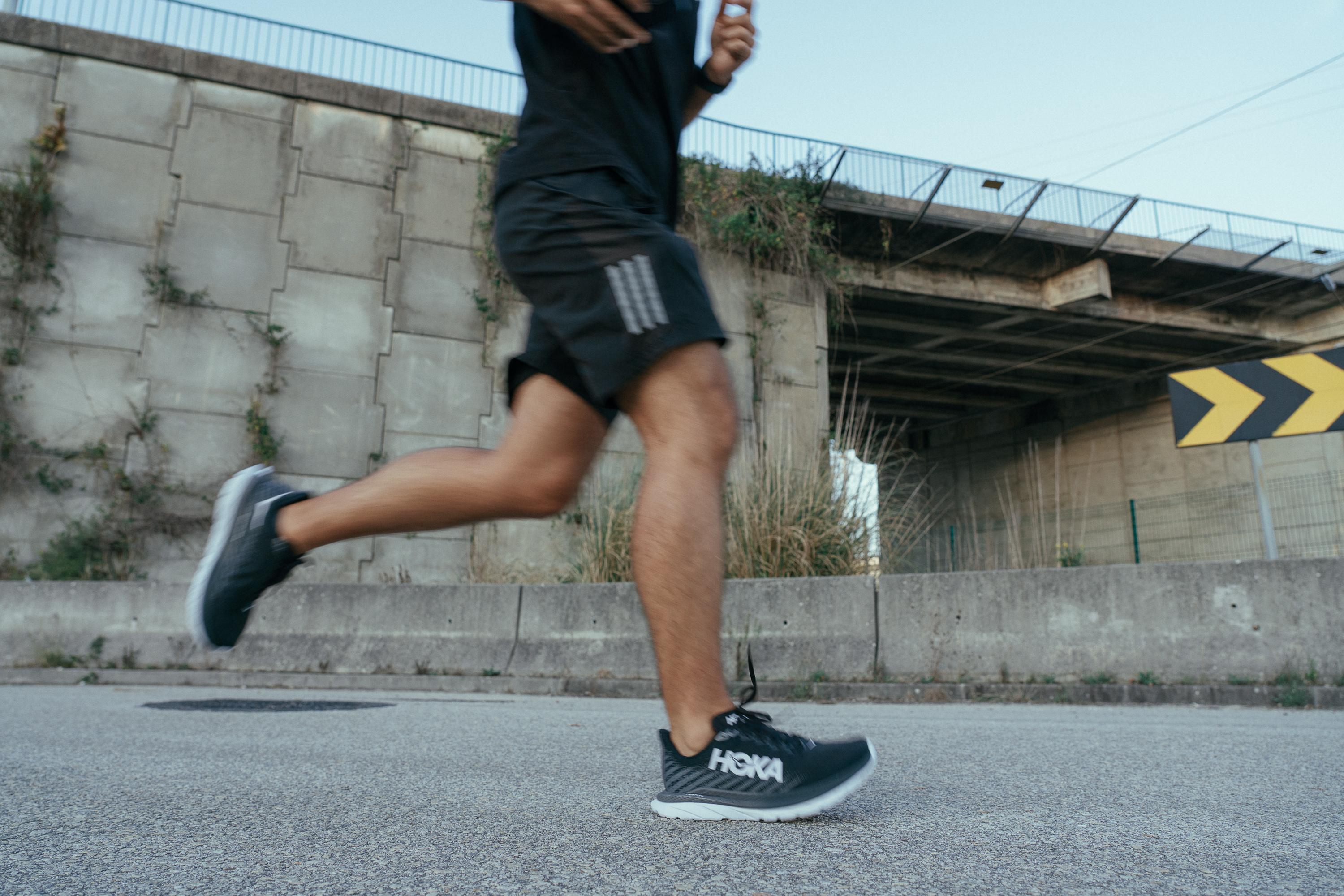
| Hoka Mach 5 | 7.9 oz (225g) |
| Average | 9.3 oz (264g) |
Breathability
Taking the Hoka Mach 5 through our smoke breathability test, we can claim that it's got a slightly above-average level of ventilation in the upper. It is not the most ventilated one, but great for moderate temperatures.
You can also see that the toebox and tongue parts of the shoe's fabric are on the transparent side.
| Hoka Mach 5 | 4 |
| Average | 3.7 |
Stability
Lateral stability test
For a neutral shoe, the Mach 5 offers a wonderfully stable ride. There is a slight flare in its heel which we found especially handy when cornering.
Torsional rigidity
The Mach's high level of torsional flexibility helps us remember that this is a neutral shoe after all.
Twisting it in our manual test, we found that it comes on a very flexible side. On a 1-5 scale, where 1 is the most flexible, we rated it as 2.
So, if you are someone with flat feet or pronation concerns, it's better to skip the Mach 5 in favour of the Hoka Arahi 6.
| Hoka Mach 5 | 2 |
| Average | 3.5 |
Heel counter stiffness
At the back, a moderately stiff heel counter helps in keeping the heel in place. Giving it a squeeze, we rated its stiffness as 3 out of 5 in our subjective assessment (5 is the stiffest).
Even though it has a little give to it, the shoe's heel counter never lets our heels lift or slip out of the Hoka Mach 5.

The shoe's form-fittin
| Hoka Mach 5 | 3 |
| Average | 2.9 |
Midsole width - forefoot
The primary source of stability in this neutral Hoka shoe is the width of its platform.

Measuring the widest part of the forefoot, we got a fairly average result of 113 mm. However, the shoe's heel width left us truly impressed!
| Hoka Mach 5 | 113.0 mm |
| Average | 114.3 mm |
Midsole width - heel
The heel landing area of the shoe's sole is significantly wider than the average. According to our calliper, the heel is 96.7 mm wide (6.6 mm wider than the average!).
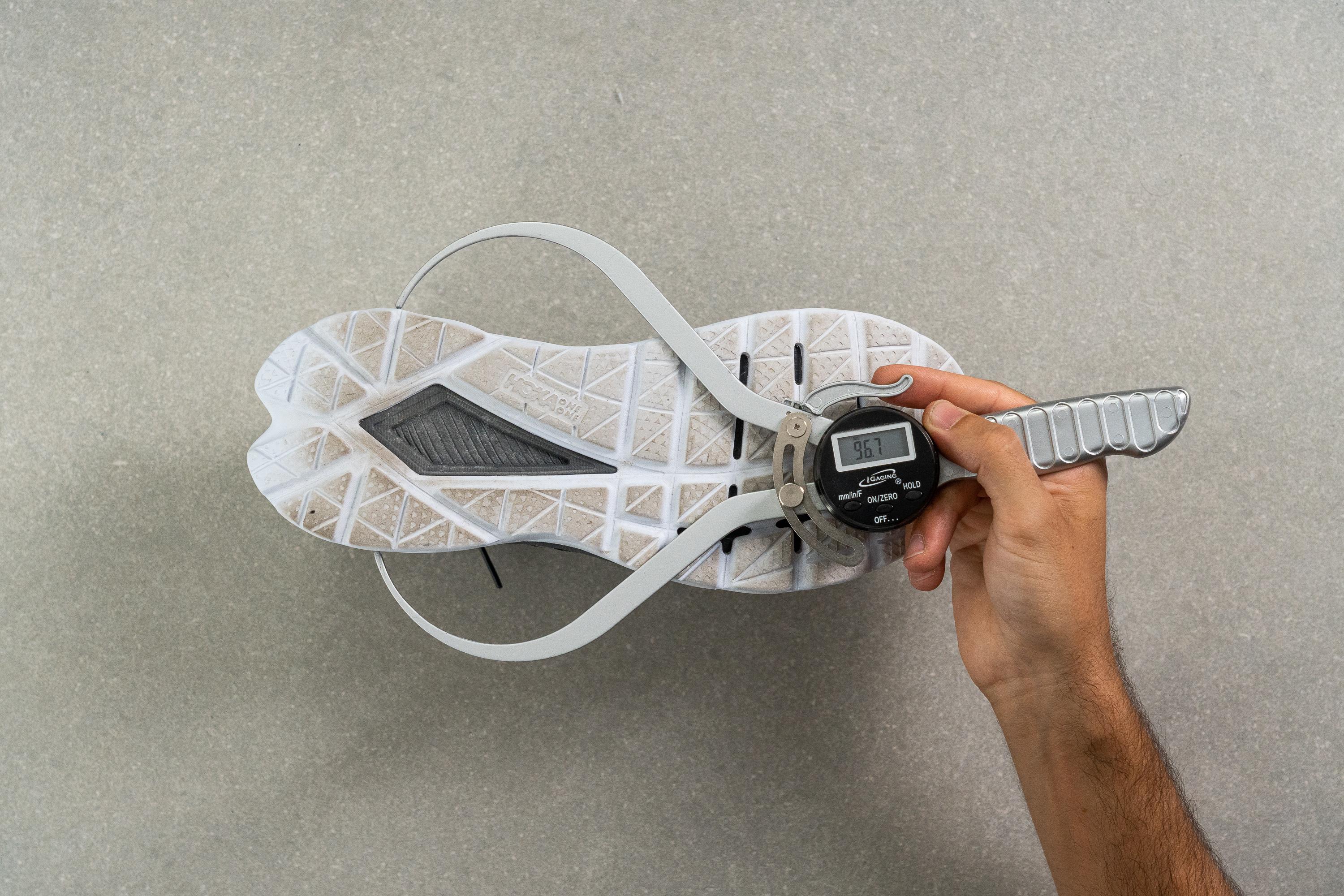
| Hoka Mach 5 | 96.7 mm |
| Average | 90.7 mm |
Durability
Outsole hardness
There is no rubber outsole on the Hoka Mach 5. Technically, the shoe uses a layer of rubberized foam as a substitute for the rubber outsole. So, we ended up measuring the firmness of this bottom compound.
No wonder our durometer showed such a low number!
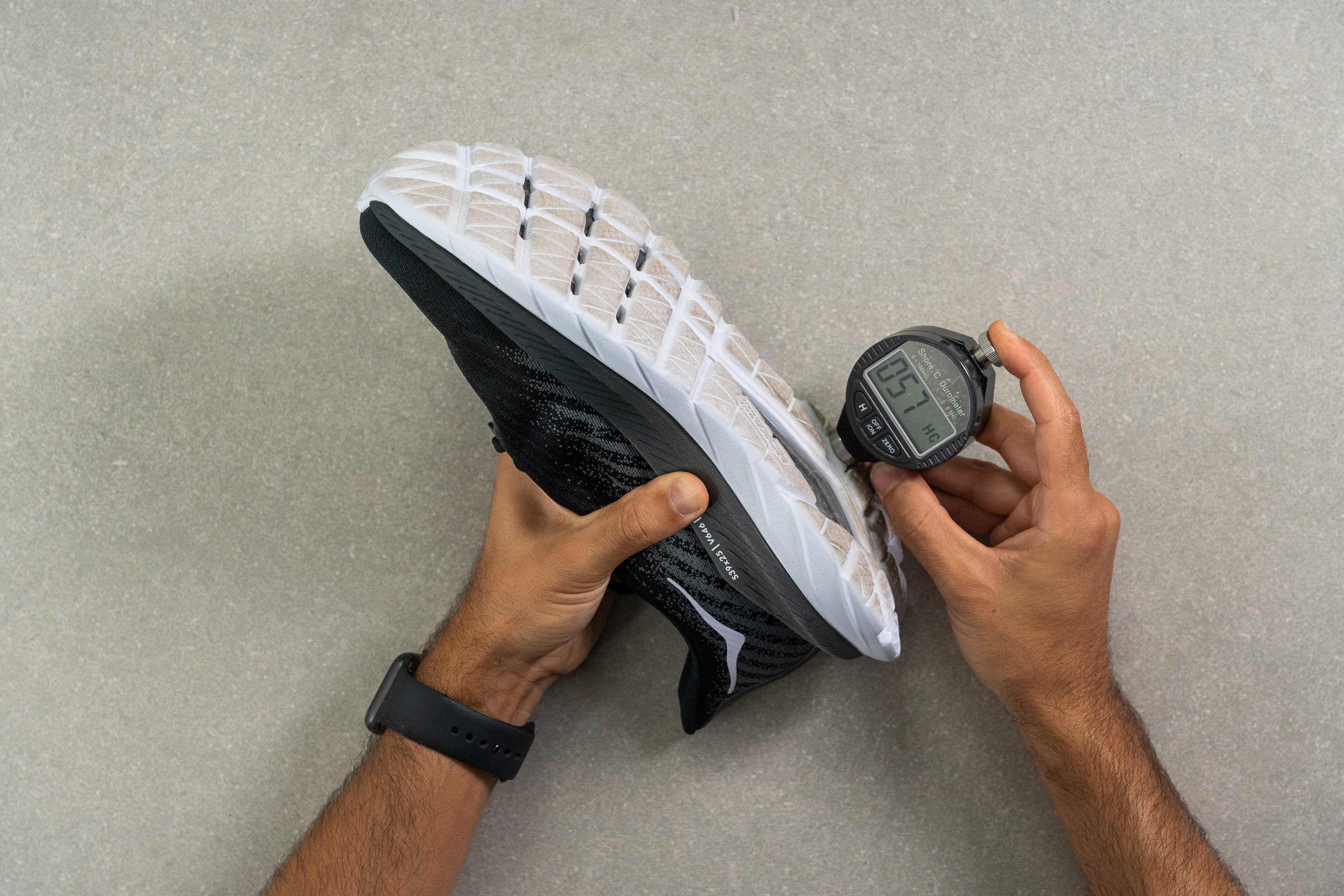
At 57.0 HC, this Hoka shoe's bottom is 40% softer than average! And that's pretty dangerous for the shoe's long-term durability as softer materials wear out much faster on the harsh pavement.
Thus, we cannot expect more than 300 miles from this trainer.
| Hoka Mach 5 | 57.0 HC |
| Average | 79.2 HC |
Misc
Insole thickness
The Mach 5 features a pretty standard, moderately padded insole. Measuring its heel thickness, we got 4.2 mm - the same as the average.

| Hoka Mach 5 | 4.2 mm |
| Average | 4.5 mm |
Midsole softness in cold (%)
But if you're planning to expose this Hoka shoe to cold temperatures, be prepared that the ProFly+ foam gets considerably firmer.
Running on chilly days, the shoe might take some breaking in. In our freezer test, the Mach 5 got 60% firmer compared to room temperature.
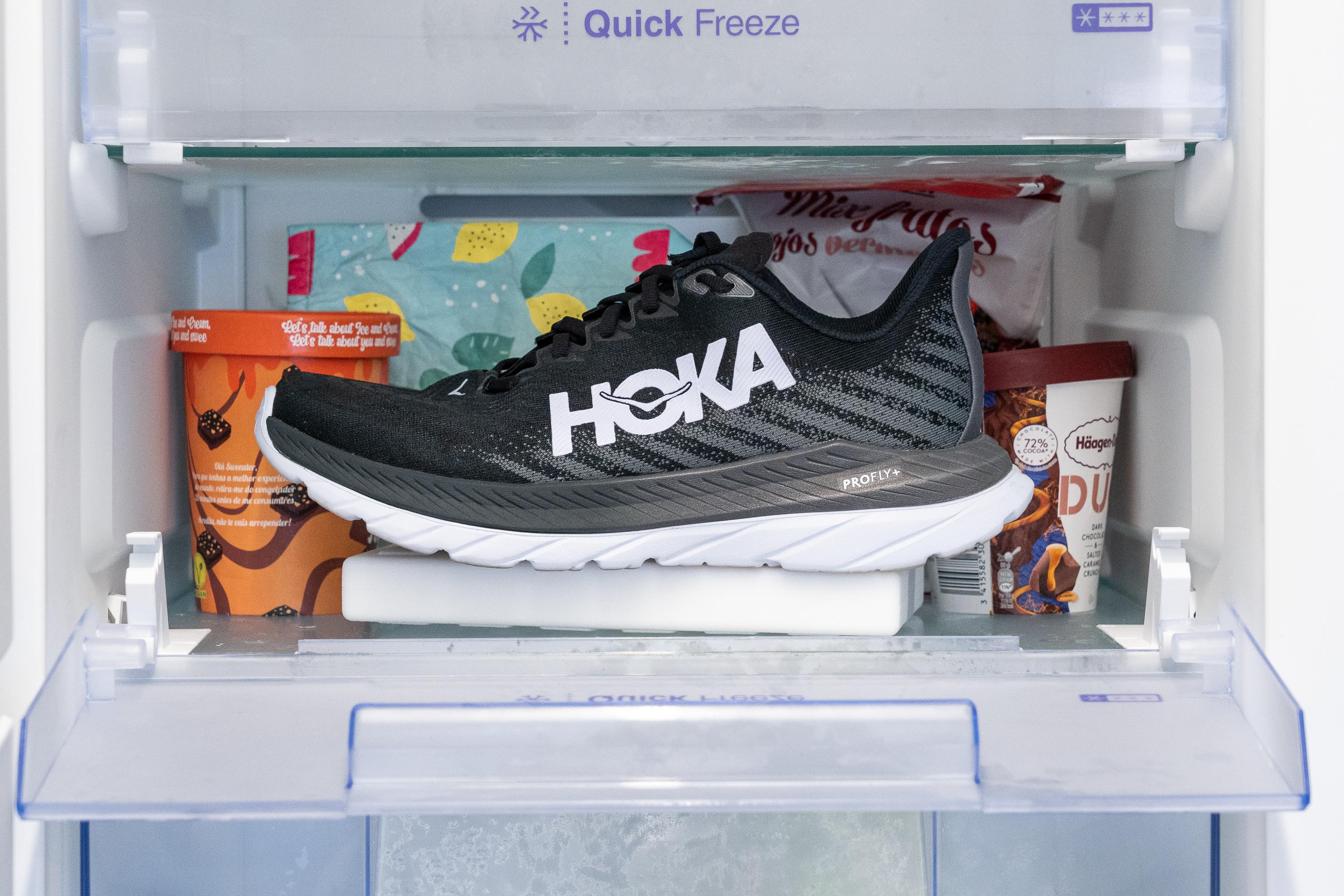
| Hoka Mach 5 | 60% |
| Average | 24% |
Reflective elements
Comfort aside, another upper perk of the Mach 5's upper is that it's reflective.
Tongue padding
Putting the shoe on, we were in awe of its supremely comfortable upper. The shoe has light padding through the heel and collar, which never caused rubbing or hot spots. The padded tongue also acted like a light pillow that prevented lace pressure.
We measured the shoe's tongue at 4.3 mm, which is typical for a speed-oriented running shoe. The average across all types of running shoes is 5.8 mm.
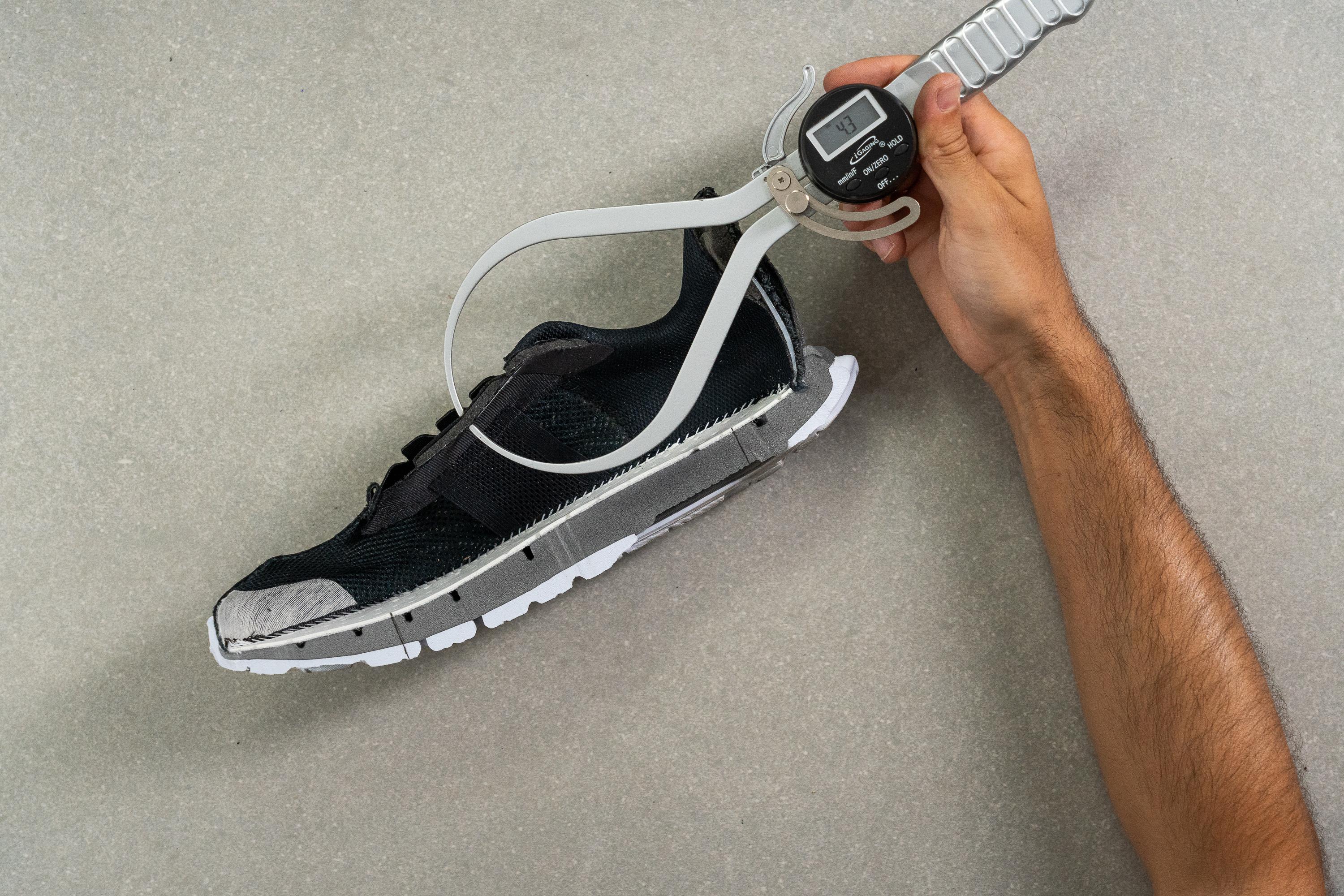
Comfort aside, another u
| Hoka Mach 5 | 4.3 mm |
| Average | 5.8 mm |
Tongue: gusset type
The shoe's form-fitting upper is also complemented by the semi-gusseted tongue (attached to the sides). It held our feet securely all throughout the run.
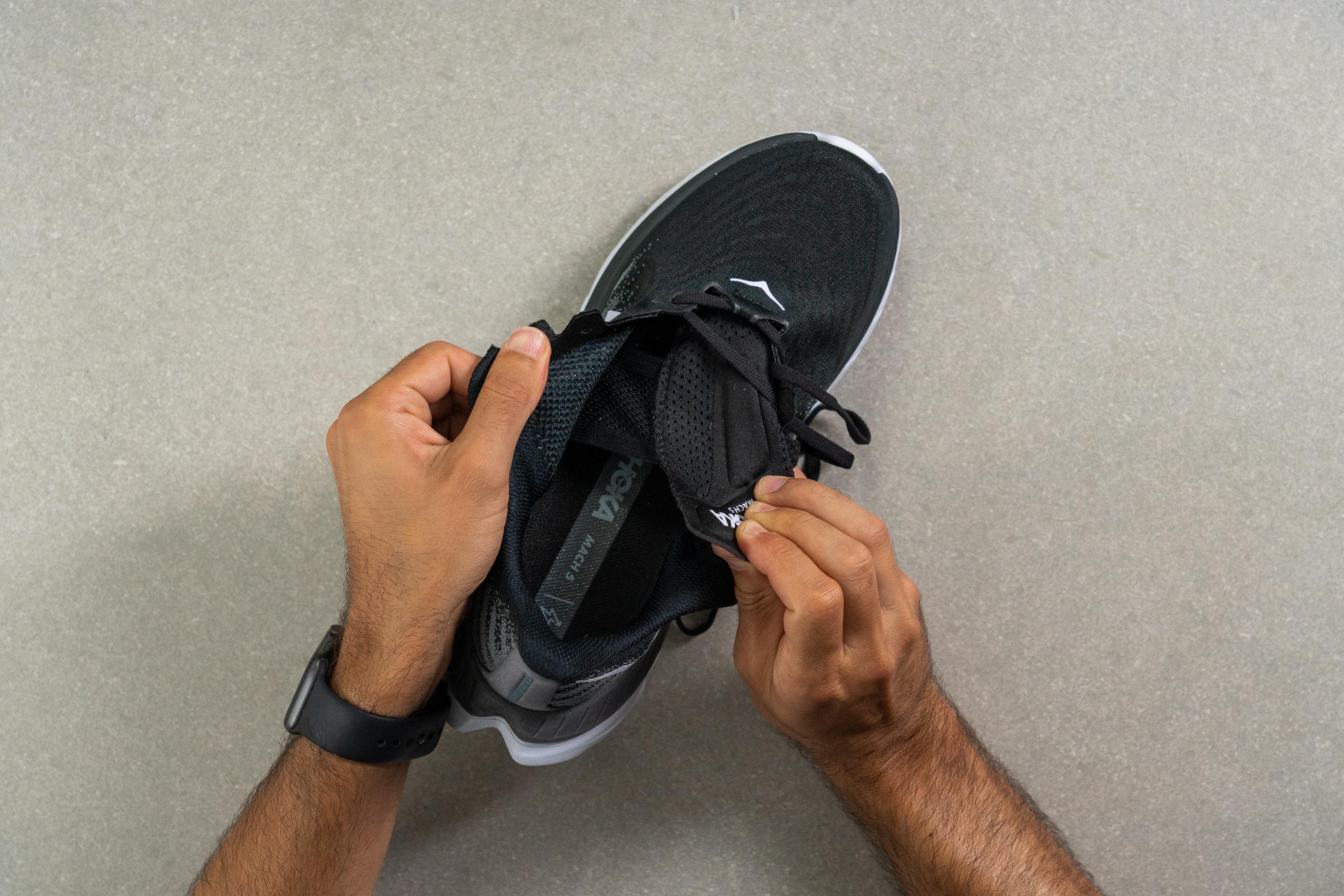
| Hoka Mach 5 | Both sides (semi) |









































